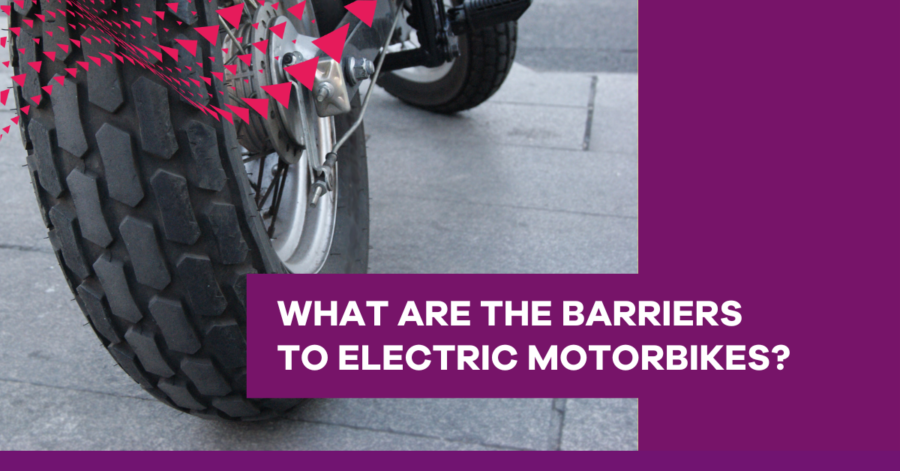
As part of the government’s ‘road to zero’ plans, all new motorbikes from 2035 will be e-powered.
In our recent survey of current motorbike owners, which attracted over 850 responses – of the 35% who said they would never buy an electric motorbike, 60% said limitations on distance you can travel on a single charge is a key barrier, 50% said they were too expensive and 50% cited the impact on their biking experience. The time it takes to recharge and the lack of infrastructure to support charging are also clear barriers.
Many bikers (20%) also cited safety due to lack of noise as an area of concern and whilst we don’t have specific data on environmental concerns, many commented that the manufacturing and disposal of batteries impacts more on the environment than many people realise.
Currently, electric motorbikes account for around 6% of all sales, but there is clearly some way to go before they are accepted across the whole of the biking community.
Here we consider the top five barriers as cited by respondents in our survey in a bit more detail.
1. Limitations on distance
Limitations on distance is the top reason motorcyclists are not choosing electric right now.
In a similar way to electric car owners, electric bikers suffer from the phenomenon of “range anxiety” with many riders worrying that an electric motorcycle won’t provide enough charge to reach their destination.
Given many of our respondents are casual riders this comes as no surprise. We would expect them to want the ability to ride for longer distances for those weekend tours of the countryside on a sunny day.
Many of our respondents were quick to point out the lack of charging points particularly in the countryside and certainly outside of big cities, the infrastructure is still lacking. The current average distance on one charge is around the 50-mile mark, which you could argue makes them suitable only to commuters.
The government’s plan is to ensure drivers will never be further than 30 miles from a rapid charging station by 2030, which should go some way to easing these concerns in the next few years.
2. The cost of electric bikes
Cost is clearly also a huge factor for electric sceptics. It is well known that electric motorbikes are very (some would say eye-wateringly) expensive although lower-cost models designed for daily commuters are entering the market and helping to make prices more affordable for more riders.
Several people also commented on the cost of recharging, showing concerns for the current high cost of electricity.
3. The loss of the biking experience
“You can’t beat the sound of an engine “on song”” is how one of our survey respondents described the attraction of the petrol fuelled engine.
The thrill of the noise, the vibrations of the engine, the smell of the fumes and the overall fun factor trump everything for some riders and are driving a reluctance amongst some owners to ever switch to electric. Someone even commented that electric bikes have no soul. This sentimentality and longing to hang on to the revs could arguably be the hardest barrier to overcome.
4. Safety on the roads
The lack of sound from an electric bike has also led to some questioning whether the silence of an electric motor could compromise safety on the roads. One respondent said “Too quiet, I’m a firm believer of loud pipes save lives. If they can’t hear you, they won’t see you.”
5. Environmental impact of manufacturing batteries
Many of our survey respondents commented that they have concerns around the impact of mining for the necessary raw materials (mainly lithium and cobalt) used for making batteries and the disposal of batteries at the end of their life.
The issues around this are well documented and efforts are being made to address them as well as progress being made to greatly improve the recycling of batteries by 2030.
Summary of our findings
Going back to our survey, if the issues around cost, charging and the range of models on offer were to be addressed, 17% said they would buy electric in future, whilst 53% are still sitting on the fence.
If the 2035 government target is to be reached, there is just over 10 years for the manufacturers to convince many riders to move away from the rumble of an exhaust.
Improvements are being made all the time in battery capacities and charging capabilities, as well as recycling of batteries. More models coming on to the market should start to push prices down.
Just as electric cars have paved the way and become a viable option, bikes will follow although it seems currently that many people need more convincing and may wait until they are forced into it. The biggest challenge may well be overcoming the sentimentality barrier and the experience factor of riding a petrol-fuelled bike.



